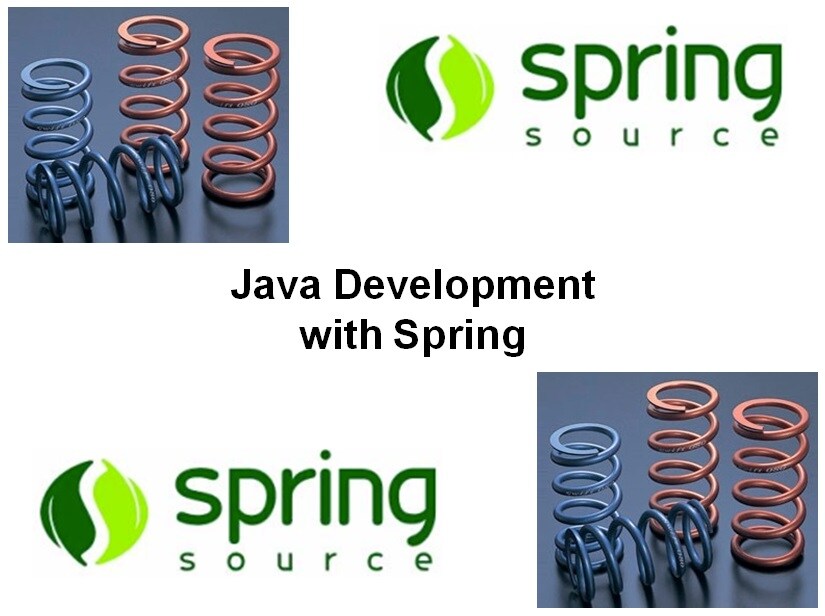-
Learning by doing
-
Trainers with practical experience
-
Classroom training
-
Detailed course material
-
Clear content description
-
Tailormade content possible
-
Training that proceeds
-
Small groups
Spring is a popular framework for the development of Java applications. It is a lightweight alternative to Jakarta EE and uses dependency injection and auto configuration. The latest variant, Spring Boot, is ideally suited for the development of microservices. SpiralTrain provides classroom and advanced Spring and Spring Boot training courses.
Visit our LinkedIn, Facebook or Instagram page for an impression of SpiralTrain. Click on the links below for more information about the courses and the schedule.
 |
Spring Data JPA
Code:
SPR700
First start: 02-02-2026 |
3 days | € 2250 |
 |
Spring Batch
Code:
SPI600
First start: 09-02-2026 |
2 days | € 1499 |
 |
Java Development with Spring
Code:
SPI100
First start: 19-01-2026 |
5 days | € 2999 |
 |
Advanced Spring Development
Code:
SPI200
First start: 22-12-2025 |
3 days | € 1999 |
 |
Spring 5 Development
Code:
SPI300
First start: 22-12-2025 |
3 days | € 1999 |
 |
Spring Boot Development
Code:
SPI400
First start: 09-02-2026 |
4 days | € 2650 |
Spring is an open source application framework for the Java platform. The first version was written by Rod Johnson, who released the framework with the publication of his book Expert One-on-One J2EE Design and Development in October 2002. Spring is popular in the Java community as addition to or replacement for the Enterprise JavaBeans (EJB) model.
Central to the Spring Framework is its inversion of control or IoC container, which provides a consistent means of configuring and managing Java objects using reflection. Inversion of control is also known under the term dependency injection. The container is responsible for managing object lifecycles of specific objects: creating these objects, calling their initialization methods, and configuring these objects by wiring them together.
The Spring Framework also uses Aspect-oriented programming (AOP) to modularize cross-cutting concerns in aspects. Cross-cutting concerns like security, logging, profiling and transaction management can be kept outside the main program flow thus making applications more maintainable and configurable. The Spring AOP framework also takes full advantage of the Spring container. The Spring Framework uses Spring AOP internally for transaction management, security, remote access, and JMX.
Spring’s data access framework addresses common difficulties developers face when working with databases in applications. Support is provided for all popular data access frameworks in Java: JDBC, iBatis/MyBatis, Hibernate, Java Data Objects (JDO), Java Persistence API (JPA), Oracle TopLink, Apache OJB, and Apache Cayenne, among others. Spring takes care of resource management, exception handling and transaction management for these data access technologies.
Spring Boot is the newest extension to the Spring Framework. It is Spring’s convention-over-configuration solution for creating stand-alone, Spring-based Applications that you can run from a fat jar. Spring boot uses opiniated defaults of the best configuration and use of the Spring platform and third-party libraries so you can get started with minimum fuss. Most Spring Boot applications need very little Spring configuration and often have an embedded server.